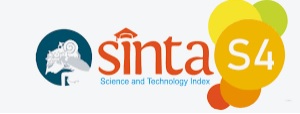Model Aplikasi Pembelajaran Menghapal al-Qur'an Berbasis Android
Abstract
This research details the problems at the Tahfidz Al-Hasan House, where students do not memorize the Quran frequently outside study hours due to the use of cell phones. To address this issue, an independent muroja'ah-based Android application was developed with monitoring and rote assessment features. The development method employs the ADDIE model, known for its effectiveness in designing learning applications. The test results indicate that the application functions well, making a positive contribution to improving Quran memorization skills. This research encourages further exploration of online learning, responsive to the needs of the Muslim millennial generation. An in-depth evaluation of the application model can serve as the basis for further development, enhancing the effectiveness of technology-based Quran memorization learning.
Keywords: Murojaah; ADDIE Model; Memorization; Quranic Education; Online Learning
Abstrak
Penelitian ini merinci permasalahan di Rumah Tahfidz Al-Hasan, di mana santri kurang melakukan pengulangan hafalan Al-Quran di luar jam belajar akibat penggunaan ponsel. Untuk mengatasi masalah tersebut, dikembangkan aplikasi Android berbasis muroja'ah mandiri dengan fitur monitoring dan penilaian hafalan. Metode pengembangan menggunakan model ADDIE, yang efektif dalam merancang aplikasi pembelajaran. Hasil pengujian menunjukkan aplikasi berfungsi baik, memberikan kontribusi positif dalam meningkatkan kemampuan menghafal Al-Quran. Penelitian ini mendorong eksplorasi lebih lanjut mengenai pembelajaran online dan responsif terhadap kebutuhan generasi milenial Muslim. Evaluasi mendalam terhadap model aplikasi dapat menjadi dasar untuk pengembangan lebih lanjut, meningkatkan efektivitas pembelajaran menghafal Al-Quran berbasis teknologi.
Keywords
References
S. Criollo-C, A. Guerrero-Arias, Á. Jaramillo-Alcázar dan S. Luján-Mora, “Mobile Learning Technologies for Education: Benefits and Pending Issues,” Applied Sciences, vol. 11, no. 9, p. 4111, 2021.
A. F. Jalil dan A. Alfurqan, “Proses Pembelajaran Tahfidz Alquran Terhadap Peserta Didik,” Annuha Journal, vol. 2, no. 1, pp. 50-65, 2022.
A. Zakirin, S. W. Saputro dan W. Ariannor, “Model Aplikasi Edukasi Mengenal Hewan Berbantuan Augmented Reality,” Jutisi: Jurnal Ilmiah Teknik Informatika dan Sistem Informasi, vol. 11, no. 3, pp. 731-740, 2022.
Y. Fauziyah, A. Fauzi dan T. Churrahman, “Analysis of Interactive Application Development as a Tahfidz Al Quran Learning Strategy,” dalam The 3rd International Conference on Intellectuals’ Global Responsibility (ICIGR) 2021, Dubai, 2022.
A. Safara, M. Zaim dan R. Refnaldi, “Mobile-based Learning in Digital Era: Android Application as a Media to Teach Grammar,” dalam Proceedings of the 1st International Conference on Education Social Sciences and Humanities (ICESSHum 2019), Dordrecht, 2019.
A. S. Putera dan N. Nurlizawati, “Utilization of Interactive Multimedia in Improving the Quality of Learning During the Covid-19 Pandemic,” dalam Proceedings of the 2nd Progress in Social Science, Humanities and Education Research Symposium (PSSHERS 2020), Dordrecht, 2021.
S. Sujarwo, S. N. Herawati, T. Sekaringtyas, D. Safitri, I. Lestari, Y. Suntari, U. Umasih, A. Marini, R. Iskandar dan A. Sudrajat, “Android-Based Interactive Media to Raise Student Learning Outcomes in Social Science,” International Journal of Interactive Mobile Technologies (iJIM), vol. 16, no. 07, pp. 4-21, 2022.
Y. P. Jasa, S. Andrianto dan A. Josi, “Pengembangan Aplikasi Android Hafalan Surah Al-Qur’an Menggunakan Metode Takrir,” JSITIK: Jurnal Sistem Informasi dan Teknologi Informasi Komputer, vol. 1, no. 2, pp. 77-93, 2023.
R. M. I. Rusyd, Panduan Praktis & Lengkap Tahsin, Tajwid, Tahfiz Untuk Pemula, Yogyakarta: Laksana, 2019.
T. Wibowo, “Perancangan Game Edukasi Hafalan Al-Qur’An Berbasis Mobile Pada Pondok Pesantren Baitul Qur’An Lampung Timur,” Ilmu Data, vol. 3, no. 1, 2023.
D. H. Pratiwi, E. Dhakiroh dan A. Saefudin, “Rancang Bangun Aplikasi Menghafal Al-Qur`An Berbasis Android untuk Pemula,” Jurnal Basicedu, vol. 7, no. 4, pp. 2239-2247, 2023.
C. Abdulwaly, Ramzuttikrar, Kunci Nikmatnya Menjaga Hafalan al Quran, Yogyakarta: Diandra Kreatif, 2019.
M. Assisi, A. Septiarini, A. H. Kridalaksana dan M. Wati, “Rancang Bangun Aplikasi Hafalan Al-Quran dengan Google Speech API Berbasis Android,” Jurnal JURTI, vol. 6, no. 1, pp. 26-35, 2022.
Q. Nada, C. Ridhuandi, P. Santoso dan D. Apriyanto, “Speech Recognition dengan Hidden Markov Model untuk Pengenalan dan Pelafalan Huruf Hijaiyah,” Jurnal AL-AZHAR Indonesia Seri Sains Dan
TeknologI, vol. 5, no. 1, pp. 19-26, 2019.
T. Nizami dan Y. A. Fahrizal, “Model Game Sejarah Perang Banjar Menggunakan Unreal Engine 4,” JUTISI, vol. 9, no. 3, pp. 83-94, 2020.
S. Suwandi dan R. Wahyudi, “Pengaruh Hafalan Al-Qur’an Terhadap Prestasi Akademik Mahasiswa Fai Universitas Ahmad Dahlan Yogyakarta,” Jurnal MUADDIB: Studi Kependidikan dan Keislaman, vol. 10, no. 1, pp. 21-44, 2020.
K. Febriyanti, S. Qoiria dan M. D. Ananda, “Evaluation of Learning to Improve The Efficiency of Student Assessment,” Journal of Quality Assurance Center Room, vol. 2, no. 1, pp. 16-20, 2022.
Y. H. Rayanto dan S. Sugianti, Penelitian Pengembangan Model ADDIE DAN R2D2: TEORI & PRAKTEK, Pasuruan: Lembaga Academic & Research Institute, 2020.
H. N. Rahmandhani dan E. Utami, “Comparative Analysis of ADDIE and ASSURE Models in Designing Learning Media Applications,” Jurnal Educative: Journal of Educational Studies, vol. 7, no. 2, pp. 123-138, 2022.
A. Bakhrun, “Perancangan Sistem Pembelajaran Daring Menggunakan Model ADDIE,” JOEAI (Journal of Education and Instruction) , vol. 4, no. 2, pp. 633-650, 2021.
E. R. Aquino, P. d. Saqui-Sannes dan R. A. Vingerhoeds , “A Methodological Assistant for UML and SysML Use Case Diagrams,” dalam International Conference on Model-Driven Engineering and Software Development, Berlin, 2021.
P. Rizky, N.A. Tasya, N.M. Shavira, H.A. Berlianda, “Studi Literatur Kekurangan dan Kelebihan Pengujian Black Box,” TEKNOMATIKA: Jurnal Teknologi dan Informatika, vol. 10, no. 2, pp. 131-140, 2023.
M. Mintarsih, “Pengujian Black Box Dengan Teknik Transition Pada Sistem Informasi Perpustakaan Berbasis Web Dengan Metode Waterfall Pada SMC Foundation,” Jurnal Teknologi Dan Sistem Informasi Bisnis, vol. 5, no. 1, pp. 33-35, 2023.
How To Cite This :
Refbacks
- There are currently no refbacks.











